
GUEST BLOGGER KATHRYN HULICK
Robots can vacuum floors, mow lawns, and even milk cows. But we don’t yet have one robot that can do any chore. And some chores, like folding and putting away laundry, are still too tough for robots. In this activity, students will imagine a future robot that could do any chore they want. Then, they’ll design and build a model of that robot. Finally, they’ll discuss the role of robots in society.
Welcome to the future
Your classroom can learn what’s coming in the future of robotics in the first chapter of Welcome to the Future: Robot friends, fusion energy, pet dinosaurs, and more by Kathryn Hulick and illustrated by Marcin Wolski (Quarto, 2021). Each chapter of this book explores how a different technology may transform the world in the future. Will we teleport from place to place, keep dinosaurs as pets, or 3D-print our dinner? Will we live on Mars or upload our brains to computers? Readers meet the scientists working to bring science fiction to life and delve deep into questions about right and wrong. Just because we can do something doesn’t mean we should. How can we build the best possible future for everyone on Earth?
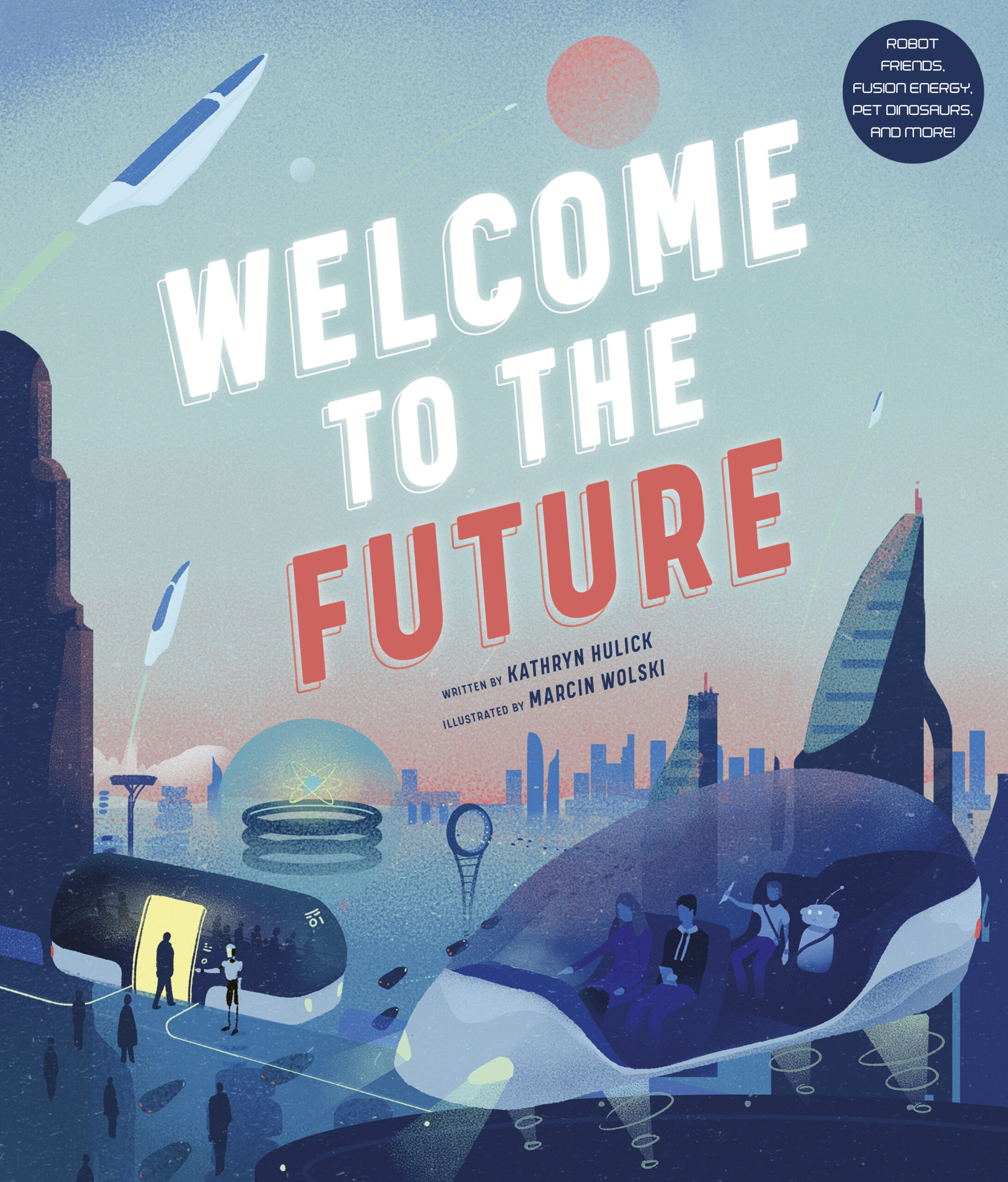
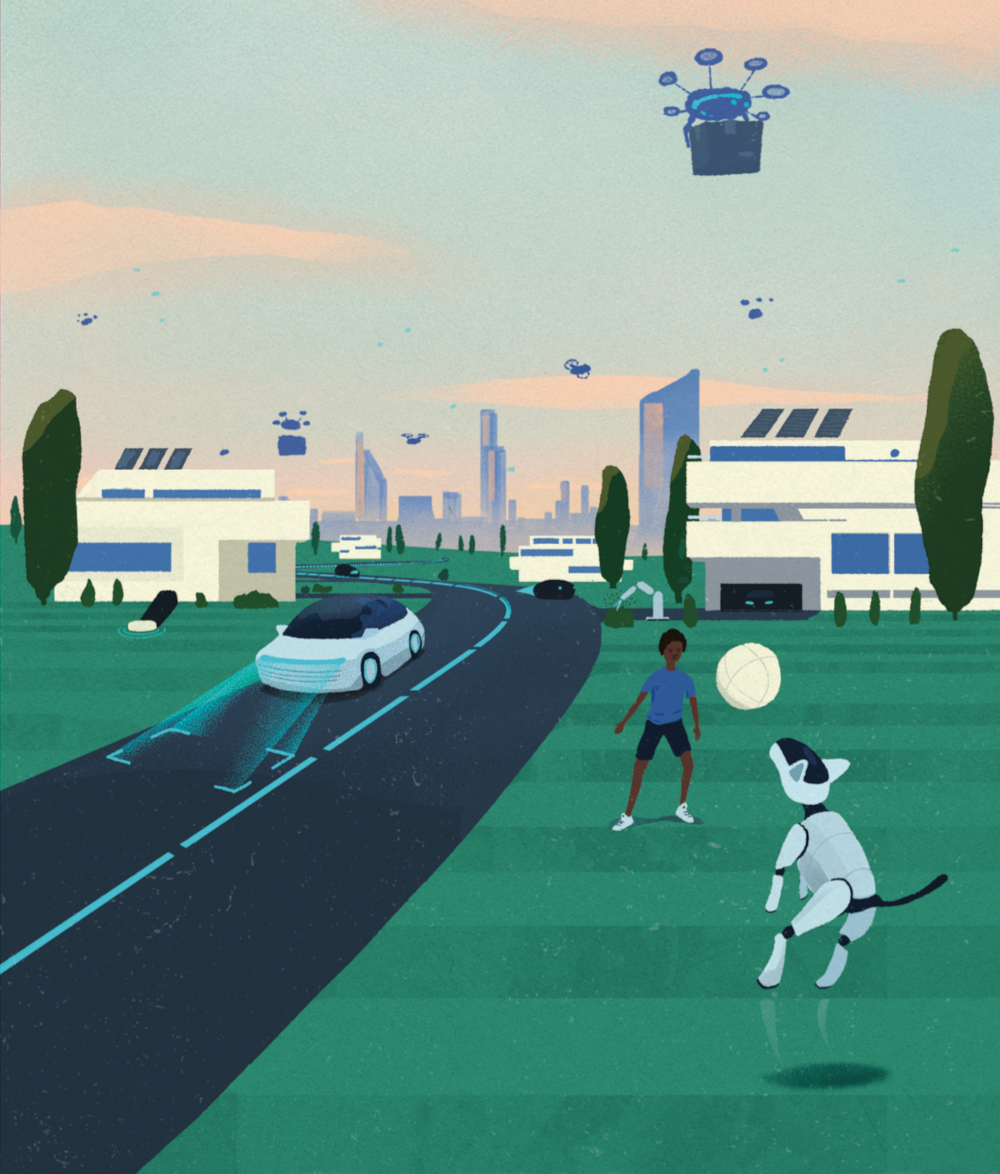
What do you want a robot to do for you?
The book explores the idea that having robots do every job for us might not be a future we really want. I write, “Would you really enjoy a permanent vacation? Playing video games or hanging out with friends all day would be fun for a while. But eventually you’d likely start to get bored or even miserable. Human beings want to feel useful and successful.”
With that idea in mind, students should think about what they want a household robot to do for them. They should also think about what they don’t want the robot to do because they enjoy doing those tasks themselves. You may ask them to make some sketches or plans. Then, either in the classroom or at home, they should build a robot model. Printable directions.
Supplies
- 1 small cardboard box
- duct tape or a hot glue gun (ask an adult for help)
- scissors
- used, clean recyclables such as paper towel tubes, bottle caps, plastic cups, straws, etc.
- Optional: pipe cleaners, buttons, or any other decorating supplies
Directions
- Decide what job or jobs you want your robot to do for you. What sort of design will help it do those jobs? Will it have legs or wheels? How many arms does it need? Will it resemble a human or an animal or something else?
- Use the tape or glue to attach items to the box. Use the scissors to cut through the box to change the robot’s shape or poke things through the sides. Get creative!
- Give your robot a name.
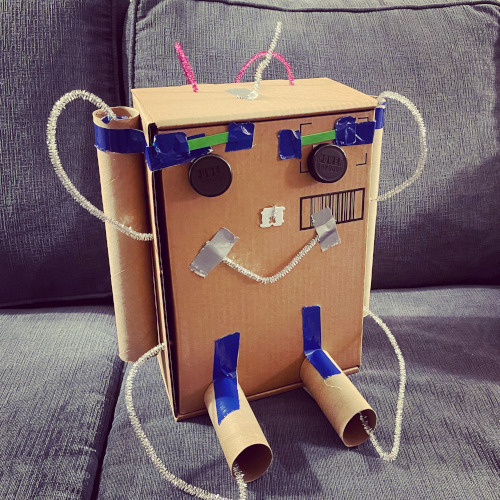
Class discussion guide
During or after this activity, discuss the role of robots in society.
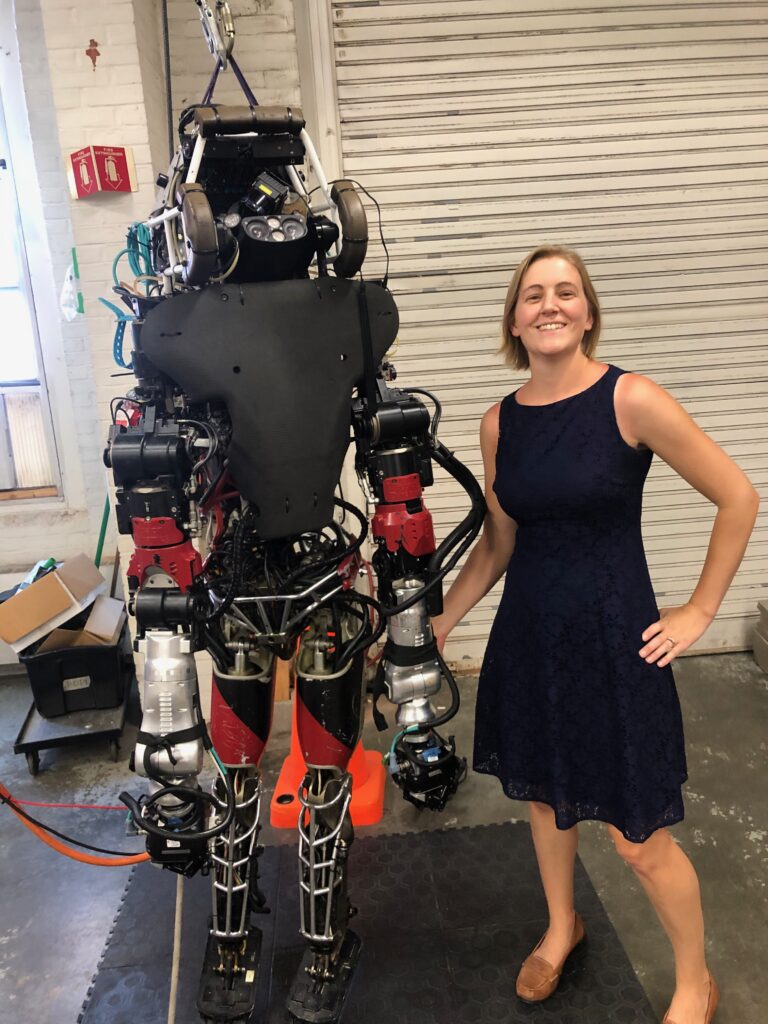
- What chores did you design your robot to perform? Why did you choose these chores?
- What chores or tasks would you not want a robot to do for you? Why not?
- What are some tasks that people might enjoy doing themselves? (Example: someone might enjoy walking the dog because they get exercise and like spending time with their pet.)
- How do you think the world might be different if everyone had robot servants at home? What might be better in your life? What might be worse?
- If robots did all the work for humans, then how would people earn money? Depending on the ages of your students, introduce the concept of a universal basic income (the government supplies everyone with money even if they don’t work) and discuss the pros and cons of this idea.
- Talk about the fact that robots are expensive. Unequal access to computers and the internet is already a big problem. Why is it unfair if everyone can’t afford robots?
- Robots also consume a lot of energy. How might robots’ use of energy harm the planet? How can we design or use robots in ways that are environmentally conscious?
Featured image credit: “Mimbo – A Friendly Robot” by langfordw is marked with CC BY 2.0.
Kathryn Hulick is author of the book WELCOME TO THE FUTURE: Robot Friends, Fusion Energy, Pet Dinosaurs, and More (Quarto, 2021). She writes regularly for Science News for Students and Muse magazine. She has also published numerous educational nonfiction books on topics such as video games, artificial intelligence, energy technology and dinosaurs. In addition to writing, Hulick enjoys hiking, painting, reading, and caring for her numerous house plants. Hulick lives in Massachusetts with her husband, son and dog. You can reach her at http://kathrynhulick.com/ on Twitter @khulick and on Instagram or TikTok @kathryn_hulick


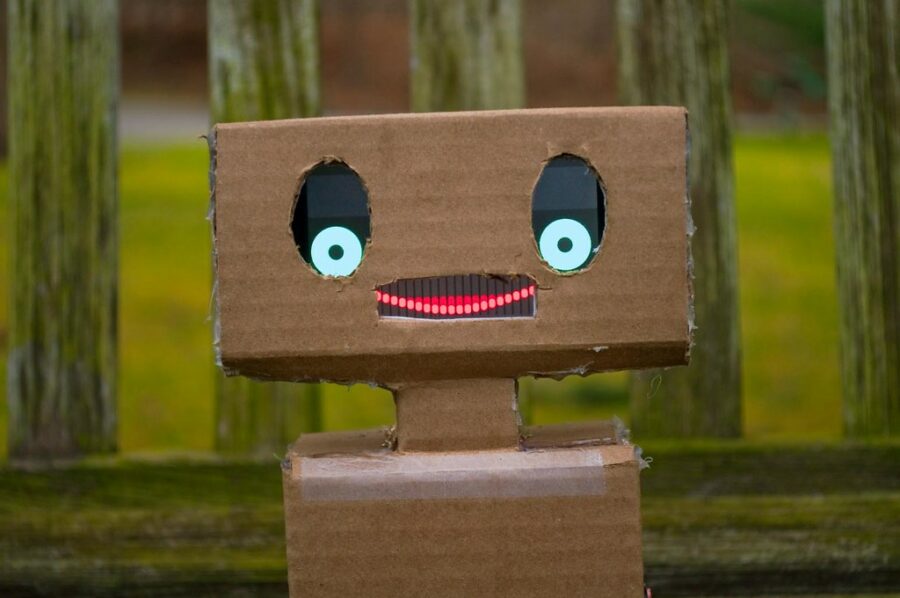






Leave a Reply
Your email is safe with me.